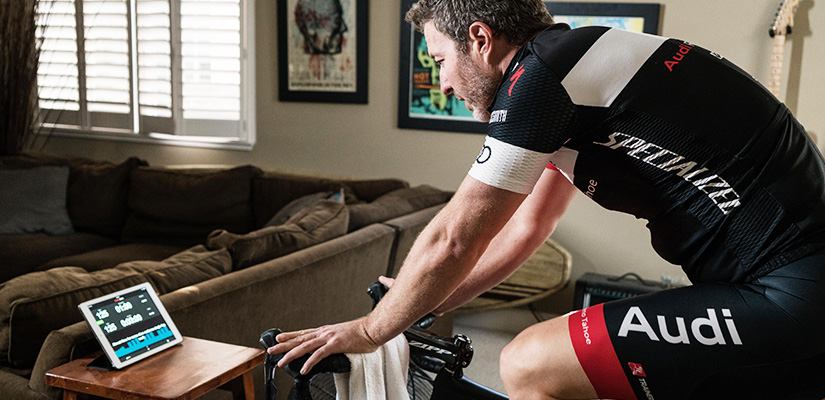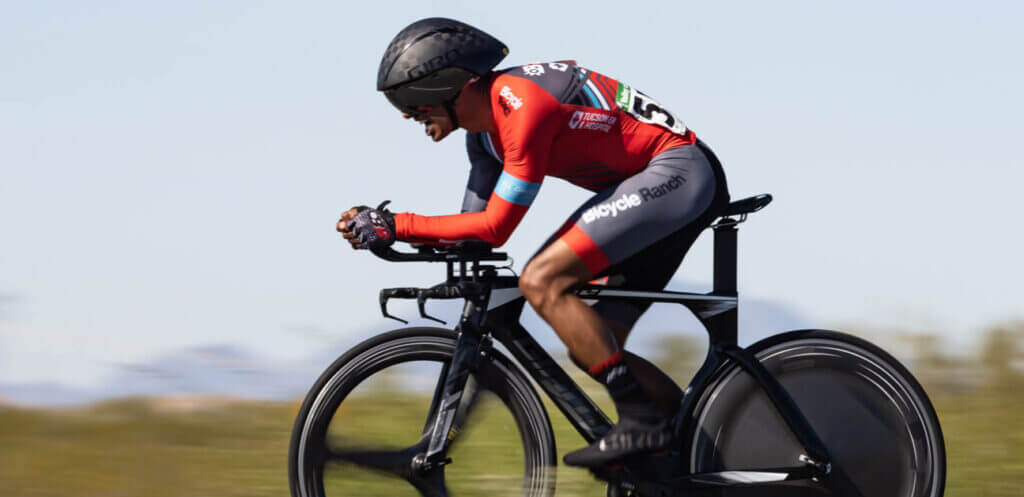Should Aging Athletes Hold Back on Intensity During Base Training?

When it comes to base training, Head Coach Chad Timmerman usually recommends Sweet Spot Base.
Sweet Spot Base is more intense than a Traditional Base training approach. Everything from neuromuscular bursts to VO2 max intervals and Sweet Spot work is included to get you generally fit in a hurry. When an athlete who’s — physiologically — getting older hears this recommendation, they sometimes wonder if Sweet Spot Base is right for them. We’ll see questions like:
Is Sweet Spot Base a good plan for someone my age? Will I be able to handle the intensity?
Yes and yes. Assuming you have no pre-existing conditions or lingering injuries limiting your activity, Sweet Spot Base is a safe and highly effective base training approach for aging athletes.
The Intensity Factor
Training, at the base level and beyond, should provide a stimulus that challenges what our bodies can do right now. This rationale especially applies as we get older. Like we’ve touched on in a previous discussion on aging endurance athletes, the intensity included in plans like Sweet Spot Base is in fact one of the only methods to combat physiological aging. When we’re no longer challenging our aerobic and strength capabilities, we run the risk of perpetuating the age-related performance decline.
The Time Factor
Time — not intensity — is the main determinant of whether an aging athlete should choose Sweet Spot Base or Traditional Base. Many cyclists have good intention when they decide to do their base training the traditional, low-intensity way. The trouble is, they often don’t have the circumstances in their life that allow them to ride as many hours as they need to achieve real fitness gains.
If you want to see significant aerobic improvements from riding at a low intensity you have to ride a lot. So unless you have at least 12 hours/week to train, we don’t recommend the Traditional approach.
How Aging Athletes Should Adjust Their Training Plan
Coach Chad is currently in the process of creating a ‘Master’s Plan’ to help guide riders through their training as they age. In the meantime, know that every TrainerRoad plan is flexible. Once you’ve chosen your base training approach, here are a few specific ways aging athletes can adjust the plan they’re on:
- Drop one of your high-intensity workouts. Does three high-intensity sessions feel like too much? The third intensity day is the ‘icing on the cake’ so-to-speak in that it provides marginal adaptation compared to the other two HIT sessions. So, if you are having a good week and feel like handling the third session is doable — go for it. If you’re feeling weak, shoot for the two HIT session and call it good.
- Allow yourself more recovery. A week of workouts doesn’t have to be seven days. If you’re struggling to make gains, your body probably needs more recovery to allow more adaptation. Add the extra days of rest while maintaining the rest of your intensity. You’ll then need to adjust your training plan accordingly.
- Switch up the time you train. Doing your training sessions in the morning? When your Thursday session rolls around, has the fatigue from Tuesday’s heavy workout worn off yet? If not, try pushing that workout to an evening ride instead. Sometimes just a few extra hours of rest makes the difference. Any more adjusting may call for you to increase your ‘week’ of workouts.
- Recover when it feels right for you. The typical training plan Coach Chad Timmerman designs includes three weeks on with one week of active recovery or taper. Feel free to manipulate this. Maybe two weeks on with one week off will better suit the adaptation capabilities of your body. Simply swap week three and four, then repeat that recovery week again in lieu of week six’s planned week.
- Take some time off the bike if necessary. Maybe the active recovery sessions during the recovery weeks are still too much work. If this is the case, slip in some days where you’re completely off the bike, and perhaps it won’t be necessary to make any adjustments to your plan.
To Wrap Up
Understanding how to combat physiological aging reveals the type of work older cyclists should focus on in their base training. If the intensity included in the Sweet Spot Base plan seems like too much, use these suggestions as tools to adjust your plan for you.

